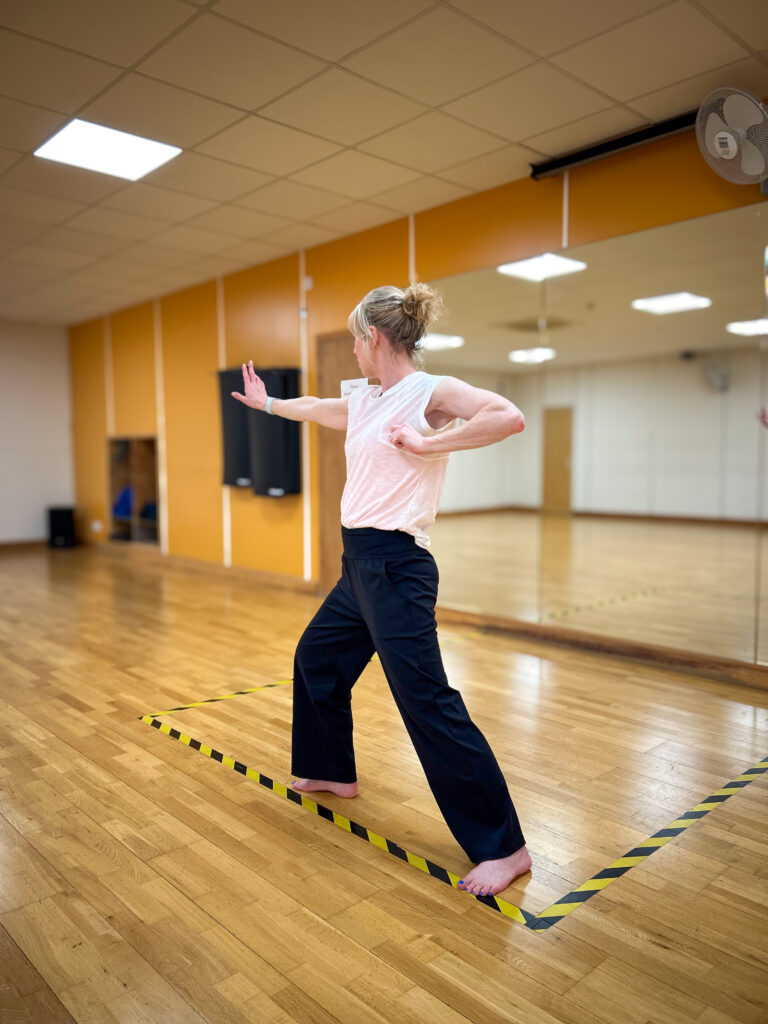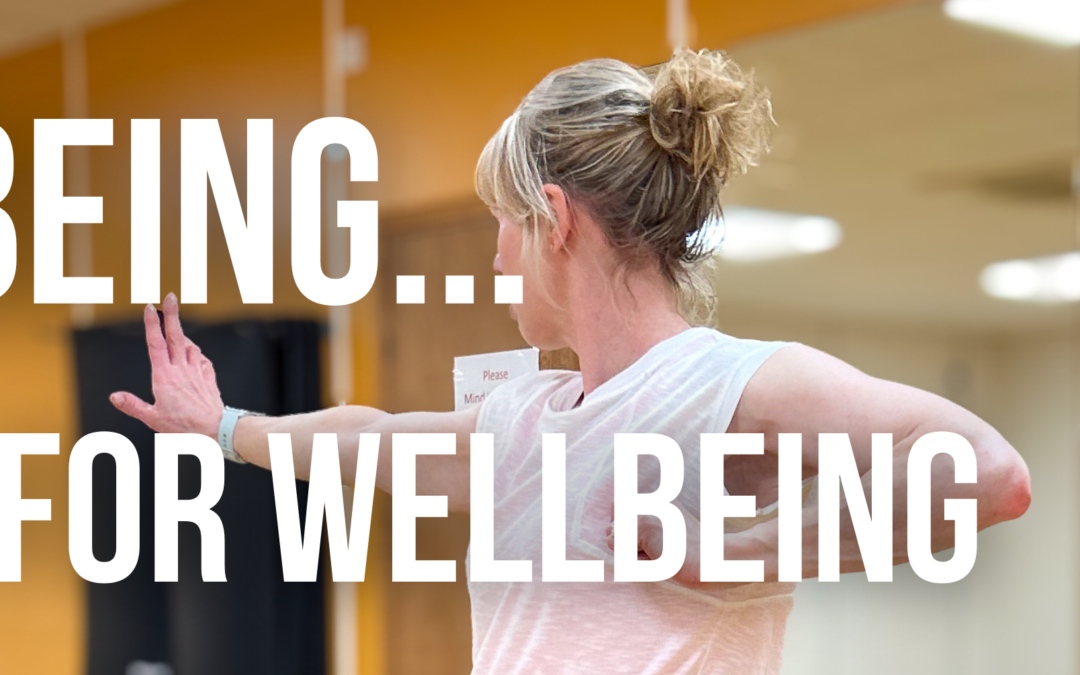Qigong for Wellbeing pronounced “chee-gong”
When you think of activities to support your health, wellness, and overall wellbeing, what comes to mind? You might immediately think of gym-based activities like cardio machines, strength training, high-intensity classes, or swimming. Perhaps you think of outdoor fitness like jogging, walking, cycling, or team sports. Maybe yoga, Pilates, or meditation come to mind.
What if there was a practice that could provide many of the elements that we know support a greater sense of wellbeing—all without requiring any equipment, intense physical effort, or dedicated physical space?
Say hello to Qigong! An ancient Chinese practice that combines movement, focused intent, and breathing, to support connection and balance between body and mind. Gentle, smooth, and dynamic movements are performed with relaxation and flow, not with force or tension.

What is Qigong? I hear you say!
Qigong is one of the pillars of Traditional Chinese medicine (TCM), alongside acupuncture, herbal medicine, and massage. For centuries, people have practiced Qigong to improve health, reduce stress, and create connection between mind and body. Many forms of Qigong have developed over thousands of years.
‘Qi’ means energy and ‘gong’ means work. So, practice helps to develop our skill for working with our body’s natural energy.
TCM holds the idea that we have channels (meridians) running throughout the body through which our internal energy (Qi) flows – a system for gathering in fresh energy, and removing old, unhelpful energy, to strengthen our internal ‘Qi’. The concept could be likened to the network of arteries and veins which carries oxygen-rich blood around the body nourishing the cells and removing waste products and toxins which would be harmful if they build up.
I’ve heard of Tai Chi, is Qigong the same?
Tai Chi and Qigong both have their origins in ancient Chinese culture. While they share similarities such as being focused on improving health and wellbeing, there are also some key differences. Tai Chi is more structured and has a martial arts background, whereas Qigong is a broader, less structured practice. Both can be highly beneficial for physical and mental health.
How can Qigong help me to achieve a greater level of wellness?
- Stress Reduction: Moving meditation activates the body’s parasympathetic (rest & digest) nervous system and offsets the sympathetic nervous system (fight or flight). This promotes tension-release, and a sense of calm and relaxation. Qigong can help reduce stress and settle the mind, improving mental focus and emotional balance.
- Increased Energy Levels: Gentle and flowing physical movements revitalise and mobilise joints and muscles, without stress or fatigue. Strengthening energy balance and flow can give a sense of renewal and vitality, and increased potential.
- Mental Clarity: Mindful smooth and flowing movements can quieten the mind and increase awareness of the movement. This helps to improve focus, reduce mental clutter, and enhance overall sense of clarity and purpose.
- Mind Body Connection: Attention to movement, mind, and breath develops awareness of the connection between body and mind. Strengthening this link can help to enhance mental and physical health, leading to a positive feedback mechanism of greater sense of well-being and better lifestyle choices.
- Coordination: Exercises involving slow, deliberate movements stimulate the body’s nervous and muscular systems to communicate, improving the neuromuscular connection, refining motor skills, and resulting in smoother movement and improvements in coordination.
- Greater Mobility: The fluid and flowing movements of Qigong exercises improve joint mobility and overall flexibility. This can help to enhance strength-training performance and reduce the risk of injury. In everyday life, and often during exercise, we tend to move in regular patterns – Qigong will have you moving and mobilising in directions that may be new or unusual.
- Improved Balance and Stability: Improved Balance and Stability: Fluid, flowing movements enhance joint mobility, balance, and coordination. Regular practice can build flexibility and balance which can be beneficial for preventing injuries, improving overall physical performance, and reducing the risk of falling.
- Enhanced Recovery: The gentle movements and focused breathing promote relaxation and activate body systems that can help to reduce muscle soreness and support faster recovery between strength or cardio training sessions.
The beauty of Qigong is that it is a simple practice that can be performed anywhere and embed itself into everyday life, giving you free and easy access to your own personalised wellbeing support anytime and anywhere.
Why should I try Qigong?
In today’s fast-paced world, where stress and fatigue are common, and we often push ourselves hard when working out, Qigong offers a refreshing counterbalance. It’s a gentle, yet dynamic and powerful, way to restore balance and vitality.
Qigong is low-impact and accessible to people of all ages and fitness levels. Whether you’re exploring wellness practices to complement your usual workouts, or seeking a gentle way to stay active, Qigong can easily become part of your schedule.
By adding Qigong to your routine, you’re investing in your overall wellness. The next time you’re at the gym, take a moment to breathe and connect with your body and mind. Let your body speak to you, listen to what it has to say – it will thank you in the long run!
If you’re curious about integrating Qigong into your wellness journey, consider attending our monthly workshop, where you can get a ‘Taste of Qigong’ – book your place on the tfd app.
Blog by Naomi Merritt – Fitness Instructor

